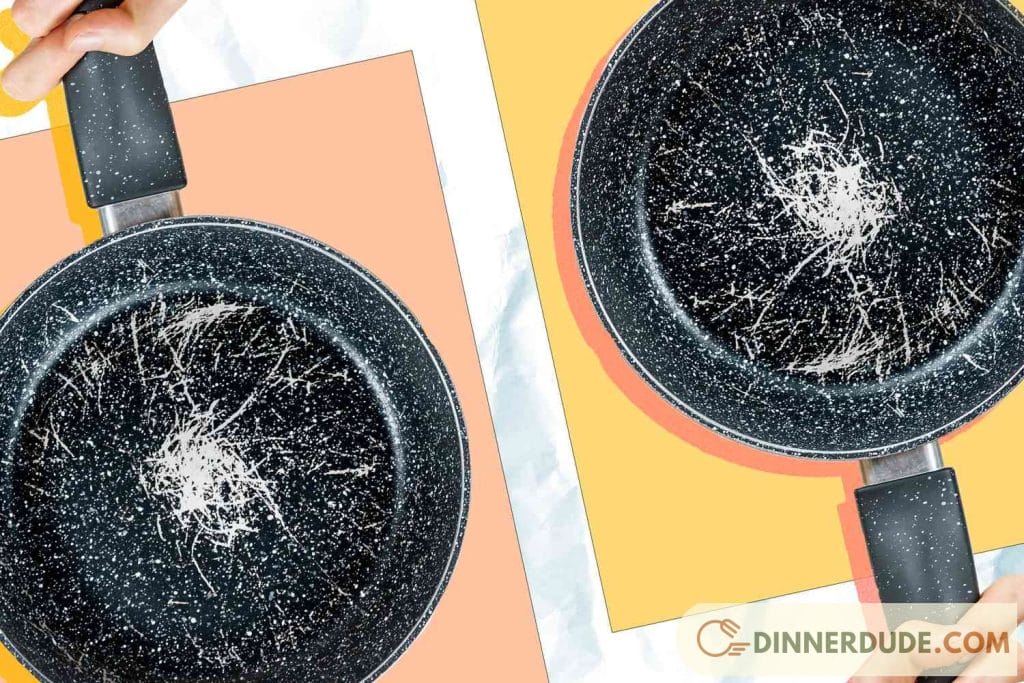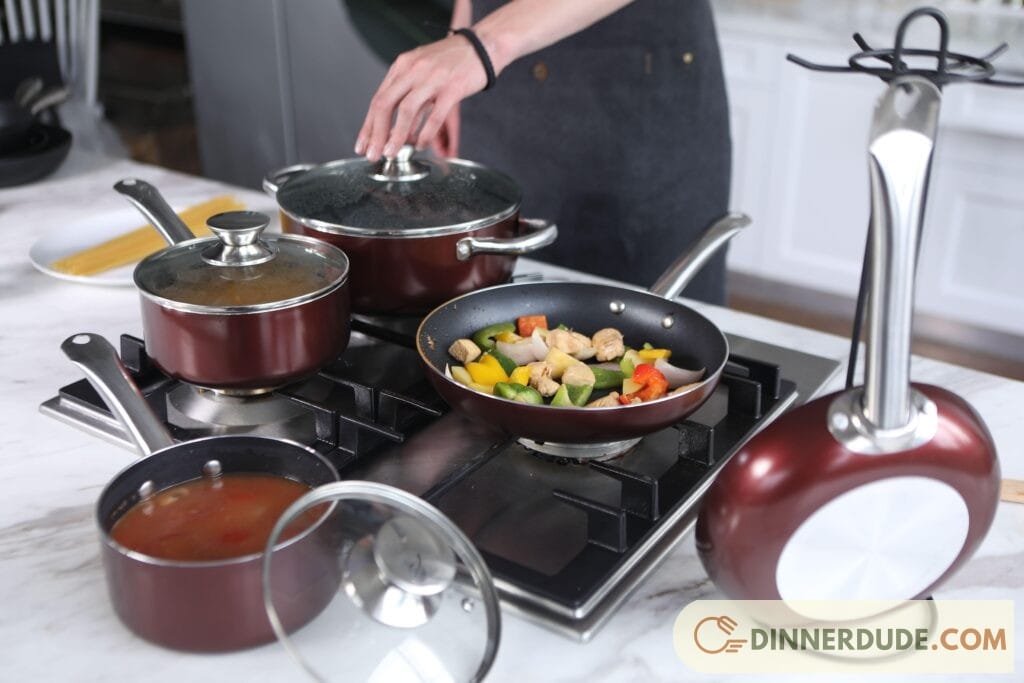Non-stick pans, a staple in many kitchens worldwide, have been under scrutiny for their potential health risks. These pans, often coated with Teflon or similar substances, are celebrated for their convenience and efficiency.
However, recent research suggests that the chemicals used in their production may pose significant health hazards. So, Are non stick pans toxic? Let’s find out with Dinnerdude through the article below!
Infomation about non-stick pans

What is a non-stick pan?
A non-stick pan is a type of cookware designed to prevent food from sticking to its surface during cooking. These pans typically feature a coating that provides a smooth, slippery surface, making it easier to cook with less oil or fat and simplifying the cleaning process.
The non-stick coating is often made from materials like polytetrafluoroethylene (PTFE), commonly known as Teflon, or ceramic.
By considering these factors, you can choose a non-stick pan that aligns with your cooking preferences, safety concerns, and overall kitchen needs.
Are non stick pans toxic?

Non-stick pans owe their slick, food-repelling properties to a group of chemicals known as perfluoroalkyl and polyfluoroakyl substances, or PFAS. These chemicals, also referred to as “forever chemicals,” have been linked to a host of health problems.
Studies have associated PFAS exposure with liver damage, lowered immunity in children, certain cancers, and high cholesterol.
When heated to high temperatures, non-stick coatings can break down and release harmful fumes into the air. This phenomenon, known as polymer fume fever, can cause temporary flu-like symptoms.
Furthermore, the long-term effects of these chemicals accumulating in the human body are not yet fully understood, raising concerns about the safety of prolonged use of non-stick cookware.
The Risks of Overheating Non-Stick Cookware
The dangers of non-stick pans become more pronounced when they are overheated. Above 570°F (300°C), Teflon coatings may begin to break down, releasing toxic fumes.
A study conducted by Cooks Illustrated found that it took only three to five minutes for non-stick pans to exceed 500 degrees on high heat, even when food was present in the pan. This finding contradicts manufacturers’ claims that “proper use” of their cookware poses no threat of contamination.
The Impact of Non-Stick Pans

Reproductive Health Impact
The chemicals used in non-stick pans have also been linked to reproductive issues. A study published in Human Reproduction found that women with elevated levels of PFOA, a chemical found in Teflon, experienced more difficulty conceiving and were twice as likely to be diagnosed with infertility.
This alarming discovery underscores the potential dangers of exposure to the chemicals present in non-stick cookware.
The Environmental Impact
In addition to the potential health risks, the production and disposal of non-stick pans also pose significant environmental concerns.
The manufacturing process of these pans involves the release of PFAS into the environment, which are persistent pollutants that do not break down easily. These chemicals can contaminate water sources and harm wildlife.
Furthermore, non-stick pans have a shorter lifespan compared to other types of cookware, leading to more waste in landfills. Therefore, the use of non-stick pans contributes to both environmental pollution and the depletion of natural resources.
Safe Alternatives to Non-Stick Pans
Despite the potential risks associated with non-stick pans, there are safe alternatives available. Cast iron, stainless steel, and ceramic pans are all viable options that do not involve the use of harmful PFAS.
Brands like GreenPan have developed their own non-stick, PFAS-free coatings, offering consumers a safer choice for non-stick cookware.

In conclusion, while non-stick pans offer convenience and ease of use, the potential health risks they pose cannot be ignored. It is crucial for consumers to be aware of these risks and consider safer alternatives when choosing their cookware.